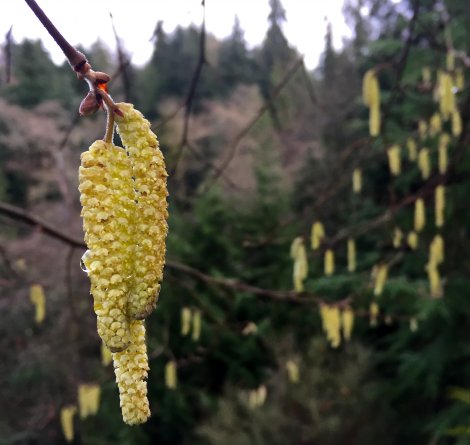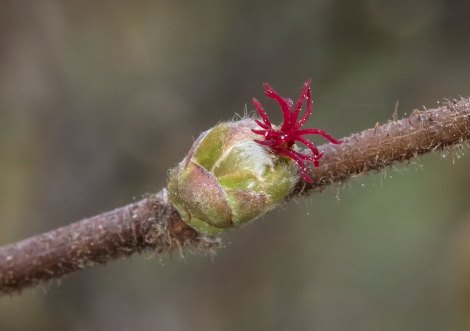
photo: Dawn Hanna
The bright yellow male catkins of beaked hazelnut (Corylus cornuta) are one of the first harbingers of spring. They’re like little rays of sunshine letting us know that life is about to get lush again.
Although beaked hazelnut depends on wind for pollination, the male catkins provide high-quality protein for bees, fly and wasp species that are out looking for food when not much else is flowering. Some birds also feed on the catkins as an early spring food.
The female catkins of beaked hazelnut are tiny by comparison. Many people never even notice them. But they are the part that will eventually grow into the hazelnut.
Yes, this native shrub/small tree does produces edible hazelnuts — although wildlife usually get to them before humans do. Lots of birds (such as Steller’s jays) and small mammals (such as Douglas squirrels) eat the nuts.
Even if you don’t get to enjoy the end product, you can still appreciate all that Corylus cornuta has to offer its wildlife neighbours.

photo: John Game
You must be logged in to post a comment.